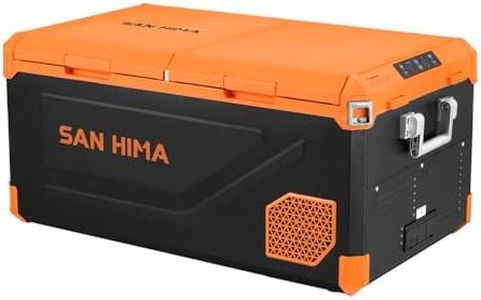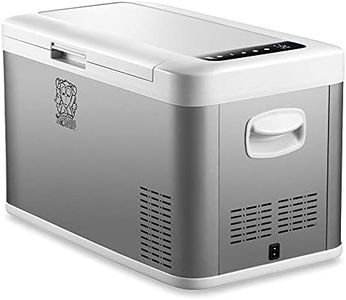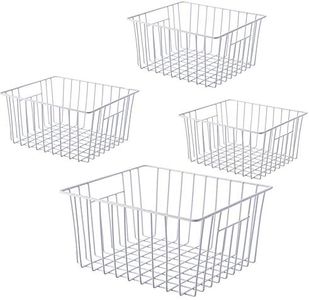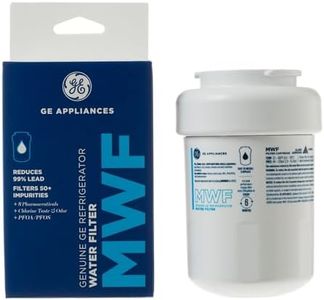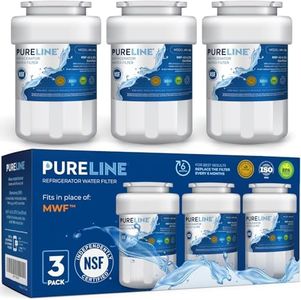We Use CookiesWe use cookies to enhance the security, performance,
functionality and for analytical and promotional activities. By continuing to browse this site you
are agreeing to our privacy policy
10 Best Smart Refrigerators
From leading brands and best sellers available on the web.By clicking on a link to a third party's website, log data is shared with that third party.
Buying Guide for the Best Smart Refrigerators
Choosing a smart refrigerator can feel like a big decision because it's a long-term investment and impacts your daily life. A smart fridge adds modern features beyond basic cooling, such as connectivity, automation, and special compartments. To find the right fit, begin by thinking about your kitchen size, how many people use the fridge, your cooking habits, and how much technology you actually want integrated into your daily routine. By understanding the key features and what they mean, you can focus on what matters most for your household.CapacityCapacity refers to how much the refrigerator can hold, usually measured in liters or cubic feet. This is important because it determines how much food you can store at once. Refrigerators can range from compact sizes suitable for one or two people, to large family-sized models. If you cook often or buy in bulk, larger capacity is better, but too large means wasted space and energy. Think about your shopping habits and the number of people in your home to decide what size fits your lifestyle.
Smart Features and ConnectivitySmart features can include Wi-Fi connectivity, touchscreen displays, voice assistant integration, cameras that show your fridge's contents, and app controls that let you manage settings or get notifications. These features can make managing your kitchen easier and sometimes even fun. Some people benefit from smart notifications (like open door alerts), while others love being able to check what's inside the fridge from their phone while at the store. Consider how much value these conveniences bring to your daily life—if you love tech and enjoy having everything connected, choose a fridge with robust smart features, but if you prefer simplicity, a basic set of smart functions may be enough.
Energy EfficiencyEnergy efficiency shows how much electricity the fridge uses for its cooling power. More efficient refrigerators use less energy, which can save you money and reduce environmental impact over time. Major brands often rate their models with standard efficiency labels. If you're concerned about your utility bills or sustainability, look for a model with high energy efficiency. Remember, larger fridges in general tend to use more power, so balance your size needs with efficiency.
Compartment Design and FlexibilityThis refers to how the interior is organized, including adjustable shelves, drawers, and special zones for things like fresh produce, meats, or beverages. Advanced smart fridges might offer temperature-adjustable compartments or even zones that switch between fridge and freezer. Consider your eating habits—if you store lots of produce, look for dedicated humidity-controlled drawers; if you freeze a lot, a flexible compartment may be useful. Being able to adjust the shelves or compartments helps the fridge adapt to your changing needs.
Water and Ice DispenserMany smart refrigerators include external water and ice dispensers. Some offer advanced filtration and customizable ice options. This feature adds convenience but takes up space inside. If you drink a lot of cold water or use ice regularly, a dispenser can be very useful. If not, you may prefer that space for extra storage.
Design and FinishThe design covers the overall look—such as color, finish (like stainless steel or matte), and whether it's a French door, side-by-side, or top/bottom freezer configuration. The right design should match your kitchen’s style and fit well in your space (consider door swing and depth too). Choosing a finish that resists fingerprints or is easy to clean can also make maintenance easier, especially with kids around.
Noise LevelNoise level is how loud the refrigerator is during normal operation, measured in decibels (dB). Quieter units are generally more pleasant, especially if your kitchen is open to living areas. If you’re sensitive to noise or spend a lot of time in the nearby space, look for models advertised as ultra-quiet or check user reviews about sound during operation.
